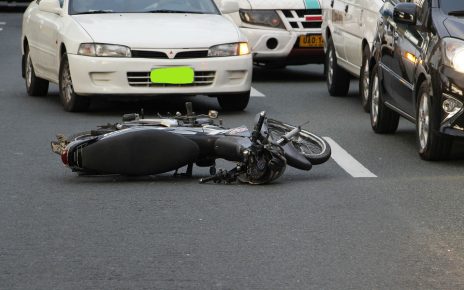By the year 2030, UK residents will no longer be able to purchase new petrol and diesel cars. By 2035, manufacturers will not be allowed to sell hybrid cars as well, and will only be selling electric cars. These actions are in line with the zero-emissions initiative in tackling the decades-long problem of transport greenhouse gases.
The initiative is the government’s way of fast-tracking the move to using electric vehicles, which is essential for achieving the 2050 net-zero emissions goal. Air pollution has long been a problem in the UK. Its cities and towns have long been clouded by dirty air.
One of the ongoing programs of the UK government is the Clean Air Zones (CAZs), an act that prevents high-polluting vehicles from entering identified cities and town centres.
Clean Air Zones
The first five Clean Air Zones were introduced in 2015 and were supposed to become operational by 2020. However, COVID-19 happened and the dates had to be changed. Most of the CAZs opened in 2021, with several new ones set to operate in the next few months and years.
The idea for the CAZs came about after the Supreme Court required government ministers to develop measures for improving air quality by reducing the levels of NO2 or nitrogen dioxide in the air. Authorities have also been pressured by environmental groups for years.
Additionally, the Royal College of Physicians and of Paediatrics and Child Health shared that around 40,000 deaths per year in the UK are premature deaths linked to toxic air. Poor air quality has long become a global health issue that needs to be addressed with stern measures.
Clean Air Zones are areas in cities and towns where vehicles with high NO2 emissions are not allowed to enter unless they pay a penalty or charge. The penalties are based on the highly polluting vehicles’ Euro emission standard. Areas under the CAZ are those with high levels of air pollution; levels that are dangerous to human health. The goal of the zone is to gradually improve local air quality.
Types of Clean Air Zones
There are two types of CAZs according to penalties: charging and non-charging.
Charging CAZs are those that have penalties or fees for highly polluting vehicles wishing to enter the area.
Non-charging CAZs are areas where the goal is to improve air quality. There are no penalties for the high emissions vehicles but they have to adhere to measures instituted in the zones. Some examples of these measures include rerouting traffic, traffic flow management, and retrofitting identified vehicles.
Clean Air Zones are also classified according to vehicle type:
- Class A – coaches, buses, private hire vehicles, taxis, and heavy goods vehicles
- Class B – coaches, buses, private hire vehicles, taxis, minibuses, vans, and heavy goods vehicles
- Class C – coaches, buses, taxis, vans, private hire vehicles, minibuses, and heavy goods vehicles
- Class D – coaches, buses, taxis, vans, private hire vehicles, cars, minibuses, heavy goods vehicles, and in some areas, motorcycles
The minimum standard for emissions for each vehicle is as follows:
- Euro VI for coaches, buses, and heavy goods vehicles
- Euro 6 (diesel) and Euro 4 (petrol) for minibuses, cars, taxis, vans, and private hire vehicles
- Euro 3 for motorcycles
Local authorities have the option to create a different minimum standard for private hire vehicles and taxis.
There are several exemptions for CAZs:
- Disabled passenger tax class vehicles
- Ultra-low emissions vehicles
- Military vehicles
- Disabled tax class vehicles
- Historic vehicles
- Certain agricultural vehicles
- Vehicles retrofitted with Clean Vehicle Retrofit Accreditation Scheme-accredited technology
Which cities have Clean Air Zones?
Cities with operational CAZs are the following:
- Aberdeen (May 2022)
- Bath (March 2021)
- Birmingham (June 2021)
- Brighton (2015 – for local buses only)
- Dundee (May 30, 2022)
- Edinburgh (May 31, 2022
- Manchester (May 30, 2022)
- Norwich (for local buses only)
- Oxford (August 2021)
- Portsmouth (November 2021)
London has its own ULEZ or Ultra Low Emission Zones, which was implemented in April 2019.
CAZs that will soon be operational:
- Bradford – Spring 2022
- Bristol – Summer 2022
- Glasgow – June 01, 2023
- Sheffield, Newcastle – no date given
For those who want to switch to a low emissions vehicle or an electric vehicle, they can approach the OZEV or the Office for Zero-Emission Vehicles. This is a good option for those who are affected by the diesel emissions scandal, more popularly known as the Dieselgate scandal.
Diesel emissions scandal claims
The Dieselgate scandal in 2015 involved only Volkswagen but soon spread to include other car manufacturers, including Mercedes-Benz. Authorities discovered defeat devices in these carmakers’ diesel vehicles, which automatically detected when a car was being tested and adjusted emissions levels so they did not go over the World Health Organization limits.
When driven in real-world road conditions though, the vehicles emit NOx (nitrogen oxides) at almost four times over the WHO and EU safe levels. Nitrogen oxides are harmful to the environment and human health. As such, car owners were lied to and led to believe that their vehicles were safe and clean.
Affected car owners should file a diesel emissions claim to get the compensation their manufacturer owes them. Working with an experienced panel of emissions solicitors such as the ones at Emissions.co.uk will make the process faster and easier. These well-trained solicitors on their panel can help win any claim, including Mercedes diesel claim cases. Get in touch with them if you need professional help with your diesel compensation claim.





